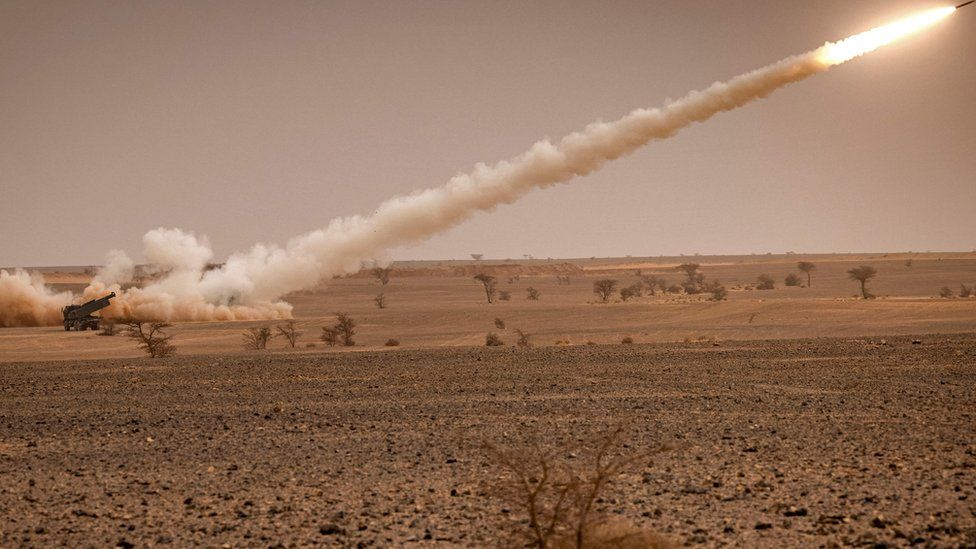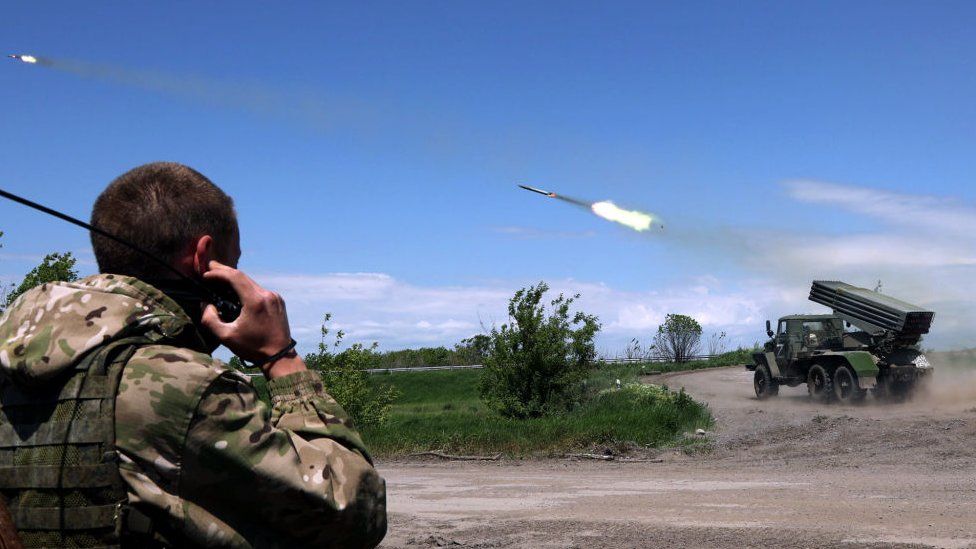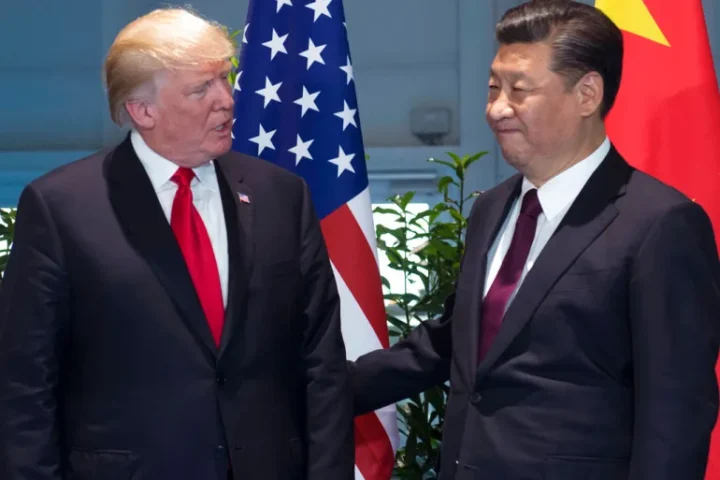The US will send Ukraine more advanced rocket systems to help it defend itself, President Biden has announced.
The weapons, long requested by Ukraine, are to help it strike enemy forces more precisely from a longer distance.
Until now, the US had refused the request out of fear the weapons could be used against targets in Russia.
Kremlin spokesman Dmitry Peskov said the US was “directly and intentionally adding fuel to the fire” with its weapons deliveries to Ukraine.
Separately, the German government has promised to send an air defence system to Ukraine.
Chancellor Olaf Scholz told MPs that the IRIS-T system was the most modern Germany possessed and would enable Ukraine to defend an entire city against Russian air attacks.
Balancing act
On Wednesday, Mr Biden said the lethal aid would strengthen Kyiv’s negotiating position against Russia and make a diplomatic solution more likely.
Writing in the New York Times, he said: “That is why I’ve decided that we will provide the Ukrainians with more advanced rocket systems and munitions that will enable them to more precisely strike key targets on the battlefield in Ukraine.”
This is a fine balancing act for Mr Biden, as providing more powerful weapons could provoke a reaction from Russia, risking direct conflict between the US and its Nato allies and Moscow.
New weaponry will include the M142 High Mobility Artillery Rocket System (HIMARS), a senior White House official said – although he did not specify how many of them would be supplied.
The systems can launch multiple precision-guided missiles at targets as far as 70km (45 miles) away – far further than the artillery that Ukraine currently has. They are also believed to be more accurate than their Russian equivalents.


Game-changer for Donbas?

This announcement has been a long time coming and represents one of the most significant military commitments so far.
As they face overwhelming Russian firepower in a grinding, attritional battle for the Donbas, Ukrainian forces complain that they lack firepower.
The HIMARS could change that.
Its GPS-guided rockets are much more accurate than the equivalent Russian systems. It’s also much quicker to reload and, as the name suggests, the launch vehicles can move quickly from one location to another.
US and Ukrainian officials will already be having detailed conversations about how and where to use the HIMARS when they arrive.
Ukraine will be looking to hit targets well beyond its current reach – command and control centres, logistics hubs, and the Russian batteries that have Ukrainian troops pinned down in Donbas.

Last month, Ukraine’s army chief said that getting the HIMARS units would be “crucial” in allowing it to counter Russian missile attacks.
The US expects Ukraine to deploy the weapons in the eastern Donbas region, where the fighting is most intense, and where they can be used to strike Russian artillery units and forces targeting Ukrainian towns.
White House officials agreed to provide the rockets, they said, only after gaining assurances from President Volodomyr Zelensky that the weapons would not be used to attack targets inside Russia.
“We are not going to send to Ukraine rocket systems that can strike into Russia,” Mr Biden wrote on Wednesday.
Mr Zelensky confirmed this in an interview for US network Newsmax.
“We’re not interested in what is happening in Russia,” he said. “We’re only interested in our own territory in Ukraine.”
But Dmitry Peskov said Moscow did not trust Mr Zelensky’s remarks.
“In order to have trust, we need to have experience of Kyiv fulfilling its promises, but there is none,” he said, quoted by Ria news agency.
Addressing the US announcement, he said: “We believe the US is directly and intentionally adding fuel to the fire.”
“The US is obviously holding the line that it will fight Russia to the last Ukrainian.”

The latest rockets will be the centrepiece of a $700m (£556m) support package for Ukraine that will be formally unveiled on Wednesday, White House officials said.
Helicopters, anti-tank weapons, tactical vehicles and spare parts are to be included in what will be the 11th package of military aid approved by the US for Ukraine since the invasion began in February.
In Wednesday’s article, Mr Biden wrote that the US’s goal was simply to see a “democratic, independent, sovereign” Ukraine, not to oust Mr Putin from his role as Russian president or to seek broader conflict with Moscow.
He blamed Russia’s continued aggression for the stalling of peace efforts, adding that the US would never put pressure on Ukraine to concede any of its territory in return for an end to the conflict.
Directly addressing the risk of nuclear weapons being used in Ukraine, Mr Biden said “we currently see no indication” of this being Russia’s intention – but warned that doing so would be unacceptable and bring with it “severe consequences”.
Soon after Mr Biden’s piece was published, Russian military officials announced that the country’s nuclear forces were holding drills in Ivanovo region near Moscow.
The drills involve around 1,000 service personnel and over 100 vehicles. They consist of patrols, setting up missile systems and protecting them from attacks, but missiles will not be launched.






